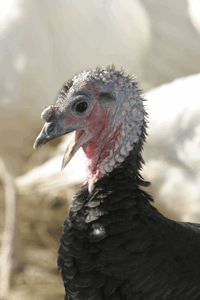H5N1 avian flu: Call for wild bird early warning system

Bernard Matthews Foods has urged the UK government and poultry industry to work together in establishing an early warning system for migratory birds that may carry H5N1 avian flu.
Then armed with this knowledge, free range turkey producers would be able to take measures to avoid contact between wild birds and poultry.
Delivering his Temperton Fellowship Report “Living through avian flu H5N1” at the Farmers Club in London, Bernard Matthews Foods’ technical director Jeremy Hall highlighted the trend to free range Christmas turkeys.
“TV chefs are encouraging consumers to go free range which has led to substantial growth, now accounting for 15% of the Christmas turkey volume. But outdoor farming brings risk and the challenge is to rear turkeys through the highest risk months without any outbreaks.”
One major factor undermining the industry’s preparedness is the lack of information on movement of the virus. He said that while there was good EU information, the approach was disjointed and data was only available when 4-5 months out of date.

Mr Hall added: “I remember having meetings with the British Trust for Ornithology (BTO) and I was amazed by the sophistication of their records and mapping. Using this data together with satellite tracking system, we would know precisely when birds start their journey back to the UK.
“But the government needs to put more support into wild bird testing and monitoring. At the moment, we depend on the good will of the RSPB and BTO for wild bird surveillance.”
Mr Hall believes the common Pochard is the most likely candidate for carrying and harbouring the H5N1 avian flu virus.
“Looking at wild birds testing positive, there were mainly Swans and Pochards. But as swans either migrate short distances, or don’t migrate at all, they are picking up infection from other species.”
In contrast, the Common Pochard travels huge distances to its breeding grounds in Eastern Russia and China, so spends the summer in contact with wild fowl in areas known to have a high presence of infection. And about 84,000 of these return to Britain each autumn.
